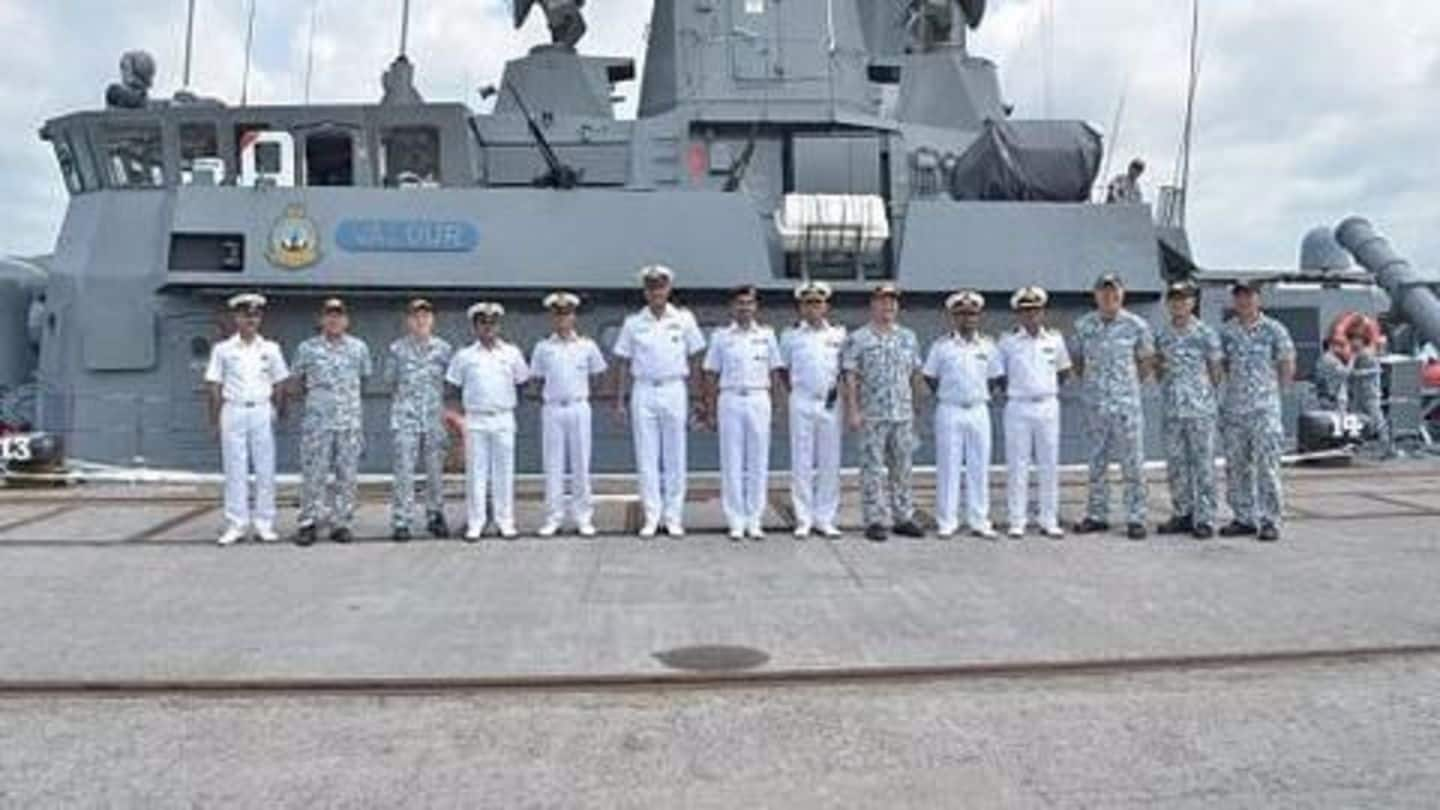
SIMBEX 2017: India, Singapore naval exercises commence in the SCS
What's the story
India and Singapore flagged off their 24th annual naval exercise "SIMBEX", in the disputed South China Sea on Thursday.
The exercise scheduled to be held from May 18-24, is aimed at improving interoperability and setting up common procedures for joint operations.
This is further seen as a manifestation of both the countries' convergent interest in keeping China's expansionist tendencies in check.
SIMBEX
Growing India-Singapore bilateral defence co-operation
Singapore India Maritime Bilateral Exercises (SIMBEX) formally started when the Republic of Singapore Navy began to train with the Indian Navy in 1994. Bilateral naval co-operation has expanded since then with numerous exchange programs and training modules.
India also trains Singapore's forces at its military facilities including Babina and Deolali Army camps and the Kalaikunda airbase.
Details
What is being planned under SIMBEX?
The SIMBEX is scheduled to be held in two phases: the harbour phase from May 18-20 and the sea phase from May 21 to 24, focusing on aspects including anti-submarine warfare.
Drills are further expected to be participated by Indian stealth frigates INS Shivalik and INS Sahyadri and attack corvette, INS Kamorta, along with Singapore's F-16 fighters and Fokker 50 maritime patrol aircraft.
Context
What context is this happening in?
Similar to China's efforts to woo India's Indian Ocean neighbours including Pakistan and Maldives, India has been trying to do the same in China's own backyard with the Association of Southeast Asian Nations (ASEAN) countries including Singapore and Vietnam.
ASEAN nations' defence ties with India have further strengthened after the South China Sea dispute, with all of them advocating for Freedom of Navigation.
Dispute
What is the South China Sea dispute about?
The South China dispute is over territory and sovereignty over ocean areas, particularly along the Paracel and the Spratly island chains.
These island chains are claimed by a number of countries in the region including China, Vietnam, the Philippines, Malaysia, Indonesia and Brunei.
The islands lie among the world's busiest shipping lanes and have vast mineral resources around them, making them highly strategic assets.
Conclusion
What does this mean?
China worries that India's focus on anti-submarine drills is aimed at targeting Chinese submarines in the East and South China seas.
Moreover, India showing off its naval strength in China's backyard, in the backdrop of China's involvement in the SCS dispute can be viewed as a fitting reply to China's disregard of India's sovereignty claims in Pakistan-occupied Kashmir and Arunachal Pradesh.